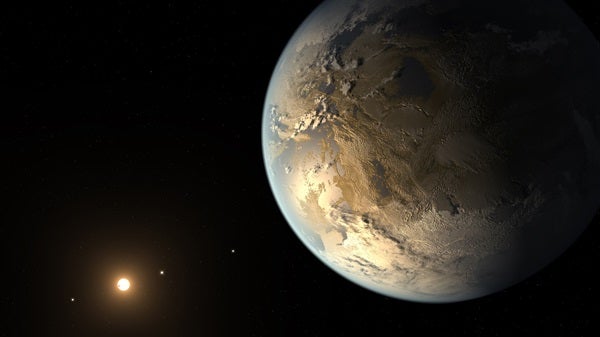Spooooooooky.
But before you get worried about invasion, just remember: our modern technology for finding planets is basically advanced light detectors or spectral instruments that can watch a star move (to name a couple).
A new study accepted for publication in Monthly Notices of the Royal Astronomical Society (preprint available here) takes a look at our nearby exoplanet neighbors, and finds that dozens of nearby worlds could detect Earth in the same way we’ve detected them. Using probability formulas, they find that there’s a 1 in 40 chance of spotting one of the innermost planets with technology like Kepler uses.
The paper finds that residents of at least 68 known exoplanetary systems could detect one or more of our solar system’s planets. On that list, only a few have a probability of detecting more than one planet, and only one of those would find Earth in their data. HATS-11b is a hot Jupiter nearly 3,000 light-years away, and from there, it’s possible to detect Earth and Jupiter transiting the Sun. We don’t currently know of any other planets in that system (such as habitable Earth-like planets), so its spying eyes can be considered at bay for now.
There are an additional five systems that would be likely to only detect Earth when looking at our inner solar system. Two contain gas giants, another a protoplanet, and yet another is a white dwarf planet. WASP-47 is the only multi-planet system in the list, and it has a super-hot super-Earth that orbits in less than a day, a hot Jupiter-type planet, a warm Neptune, and a distant gas giant. It’s also 650 light-years away. None of these are believed to be habitable, though there could be undetected worlds. In fact, no planet on the broader list is known to be in the habitable zone of its star.
The paper gives an interesting insight, beyond just “who could spy on us.” According to their calculations, aliens would only be able to see three or fewer planets in our eight-planet system, though the paper doesn’t account for the ultra-long period, still-theorized Planet Nine and doesn’t qualify Pluto as a planet.
So don’t worry too much about the spying right now. They may not even know there’s an Earth here.










